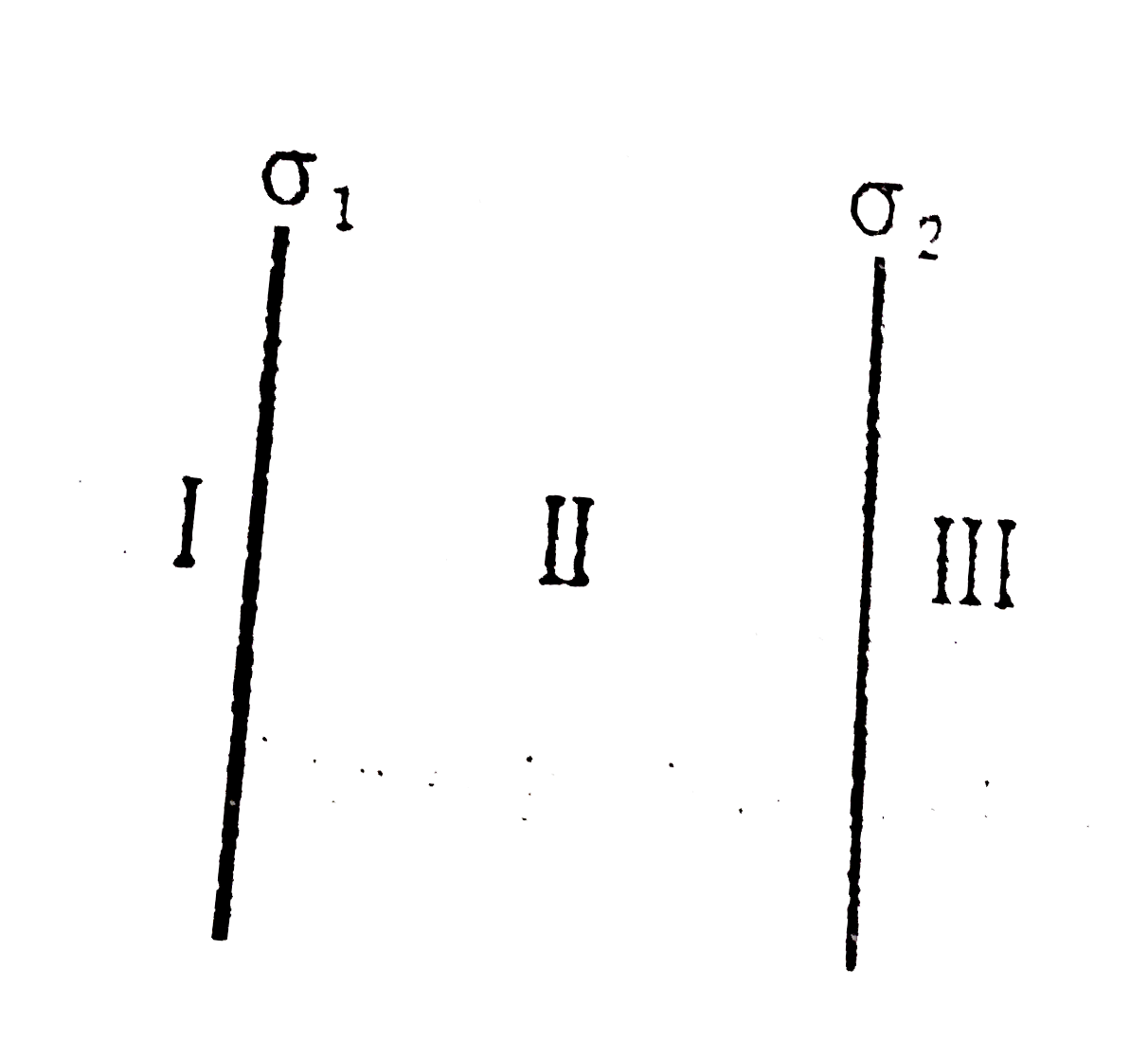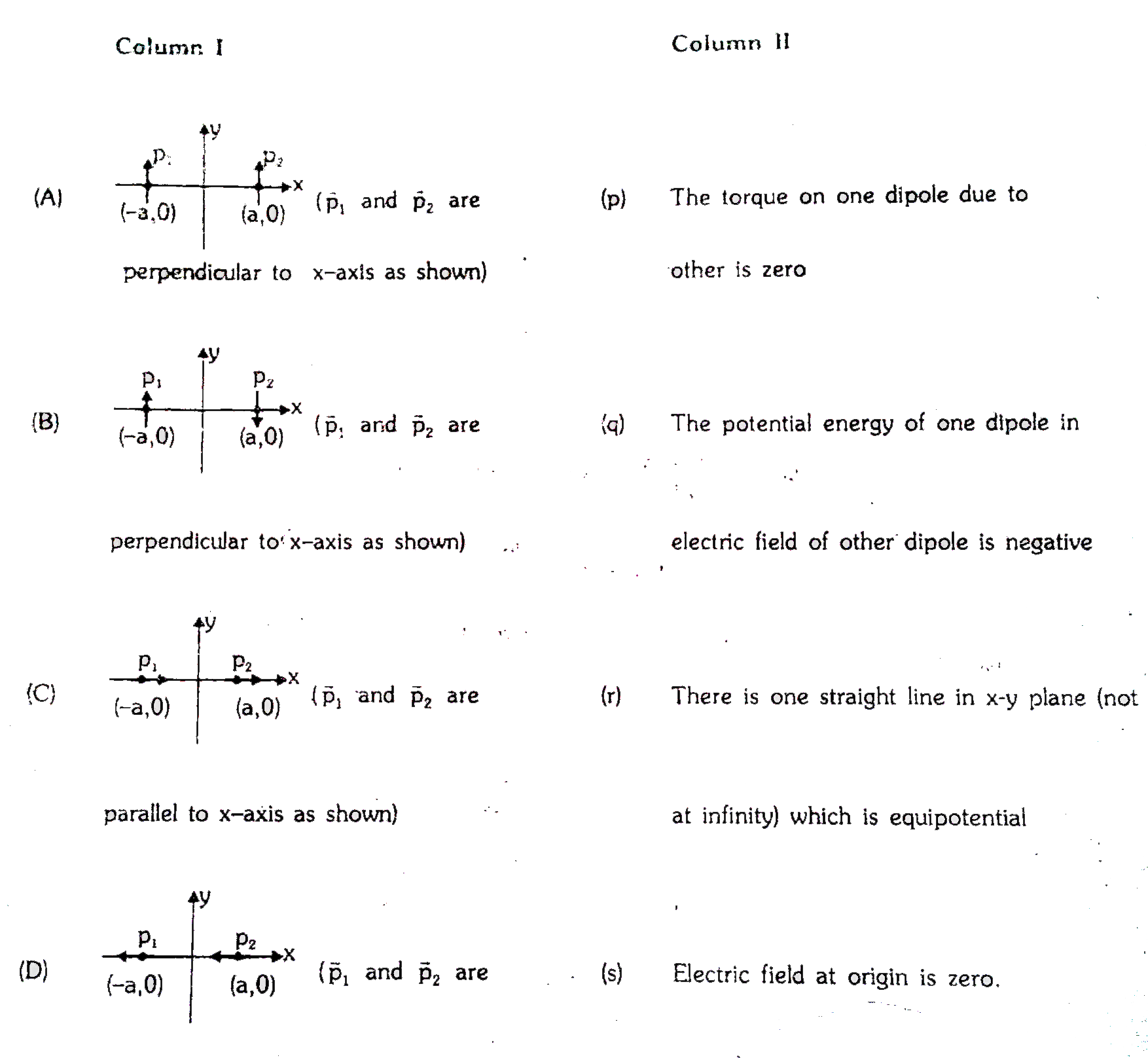Tow particles and , of equal mass and with unequal positive charges , are free to move and are initially far away from each other . With at rest , begins to move towards it with initial velocity . After a long time , finally .Solution in Gujrati
The correct Answer is:A
Equal electrostatic force (mutual interaction) acts on X and Y but in opposite direction which accelerate Y but retards X. After long time the velocity of X becomes zero while Y becomes u.
Topper's Solved these Questions
- MISCELLANEOUSBOOK - ALLEN CHAPTER - MISCELLANEOUSEXERCISE - Exercise-03
1 Videos
- MISCELLANEOUSBOOK - ALLEN CHAPTER - MISCELLANEOUSEXERCISE - Exercise-04
1 Videos
- MISCELLANEOUSBOOK - ALLEN CHAPTER - MISCELLANEOUSEXERCISE - Exersice -05(B)
20 Videos
- KINEMATICS (MOTION ALONG A STRAIGHT LINE AND MOTION IN A PLANE)BOOK - ALLEN CHAPTER - KINEMATICS (MOTION ALONG A STRAIGHT LINE AND MOTION IN A PLANE)EXERCISE - BEGINNER S BOX-7
8 Videos
- PHYSICAL WORLD, UNITS AND DIMENSIONS & ERRORS IN MEASUREMENT BOOK - ALLEN CHAPTER - PHYSICAL WORLD, UNITS AND DIMENSIONS & ERRORS IN MEASUREMENT EXERCISE - EXERCISE-IV
7 Videos
Similar Questions
Two parallel metallic plates have surface charge densities σ1 and σ2 as shown in figure.

Column-IColumn-II(A)If σ1+σ2=0(p)Electric field in region III is towards right(B)Ifσ1+σ2>0(q)Electric field in region I is zero(C)If σ1+σ2<0(r)Electric field in region I is towards roght(s)Nothing can be said
View SolutionIn each situation of Column-I two elelctric dipoles having moments →p1 and →p1 of same magnitude (that is ,p1=p2) are placed on x-axis symmetrically about origin in different orientations as shown. In column-II certain inferences are drawn for these two dipoles. Then match the different orientations of dipole in column-I with the corresponding result in column-II.

View SolutionPlanck's constant has dimensions …………….
View SolutionA football player kicks a ball at an angle of 30∘ with an initial speed of 20 m/s. Assuming that the ball travels in a vertical plane, calculate (a) the time at which the ball reaches the highest point (b) the maximum height reached (c) the horizontal range of the ball (d) the time for which the ball is in the air, (g=10m/s2)
View SolutionAssertion : Gravitational forces do not depend on the medium between the masses.
Reason : Mediating particle responsible for gravitational force is graviton.
View SolutionA particle is moving along x-direction with a constant acceleration a. The particle starts from x=x_0 position with initial velocity u. We can define the position of the particle with time by the relation x=x_0+ut+(1)/(2)at^2 plot the position of the particle in relation with time is following situations (i) If initial position of the particle is on negativ x-axis, initial velocity is positive and acceleration is negative. (ii) If initial position is positive, initial velocity is negative and acceleration is positive.
View SolutionTwo positively charged particles X and Y are initially far away from each other and at rest , X begins to move towards Y with some initial velocity. The total momentum and energy of the system are p and E .
View SolutionTow particles X and Y, of equal mass and with unequal positive charges , are free to move and are initially far away from each other . With Y at rest , X begins to move towards it with initial v elocity U. After a long time , finally .
View SolutionTwo particles X and Y of equal mass and with unequal positive charges, are free to move and are initially far away from each other. With Y at rest, X begins to move towards it with initial velocity u . After a long time, finally
View SolutionTwo particles initially at rest move towards each other due to internal forces. Find the velocity of centre of mass when velocity of one particle is v and that of the other is 2v
View Solutionu प्रारम्भिक वेग और समान त्वरण व a से गतिशील एक कण का वेग समय ग्राफ है -
View SolutionThe two particles X and Y are at rest in the beginning, they move towards each other as mutual attraction, then the velocity of their mass will be
View SolutionInitially two fixed particles x and y start moving towards each other under the influence of mutual attraction. If at any moment the velocities of x and y are V and 2V respectively, then the velocity of the mass center of the body will be
View Solutionu প্রাথমিক বেগে a সমত্বরণে গতিশীল কণা s দূরত্ব অতিক্রমের পর বেগ কত হবে?
View SolutionThe potential energy of a particle of mass 2 kg moving in a plane is given by U = (-6x -8y)J . The position coordinates x and y are measured in meter. If the particle is initially at rest at position (6, 4)m, then
View SolutionThe two positively charged particles X and Y are initially located far away from each other and are stationary, X starts moving towards Y with some initial movement. The total momentum and energy of the body are p and e.
View Solution
